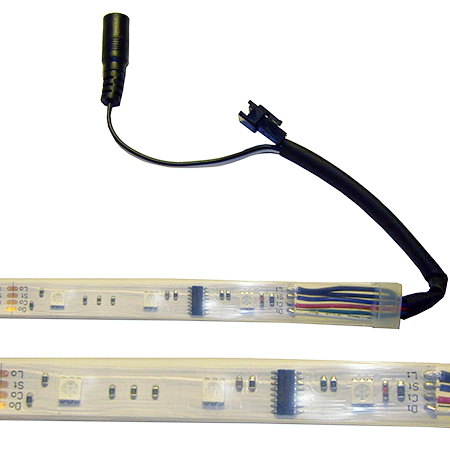- резисторы
- резисторы SMD
- резисторы перемнные, подстроечные
- конденсаторы SMD
- конденсаторы керамические
- электролитические конденсаторы
- танталовые конденсаторы
- пленочные конденсаторы
- конденсаторы Audiophiler
- транзисторы
- диоды
- стабилитроны
- тиристоры / симисторы / динисторы
- индуктивность
- резонаторы
- реле
- цифровые микросхемы
- аналоговые микросхемы
- оптоэлектроника
- кнопки, тумблеры, переключатели
- разъёмы, провода, шлейфы
- предохранители и термоконтакты
- прочее

Светодиодная лента RGB со встроенным контроллером на чипах LPD6803
ID = 1522
400 руб.
в магазине на ул. Вавилова 2 шт.
в магазине на ул. Новосибирской 0 шт.
на складе 0 шт.
Лента сетодиодная, RGB, со встроенным контроллером на чипах LPD6803.
Лента имеет один чип-контроллер на каждые три светодиода, и позволяет зажигать каждую тройку любым цветом, независимо от других. Глубина цвета - 15 бит (5 бит на каждый цветовой канал)
Предназначена для создания систем динамического света, а также бегущих строк, световых досок, светодиодных лент и даже полноценных видео экранов.
30 диодов на метр. Исполнение IP-68 (максимальная защита, в силиконовой трубке). Питается от источника 12 вольт, максимальный ток потребления 0.6 ампера на метр.
Цена за метрНа разъём питания подаём 12 вольт. Чёрный провод с разъёма данных - на GND Arduino, красный - на digital 12, синий - на digital 11
Ниже приведён код:




